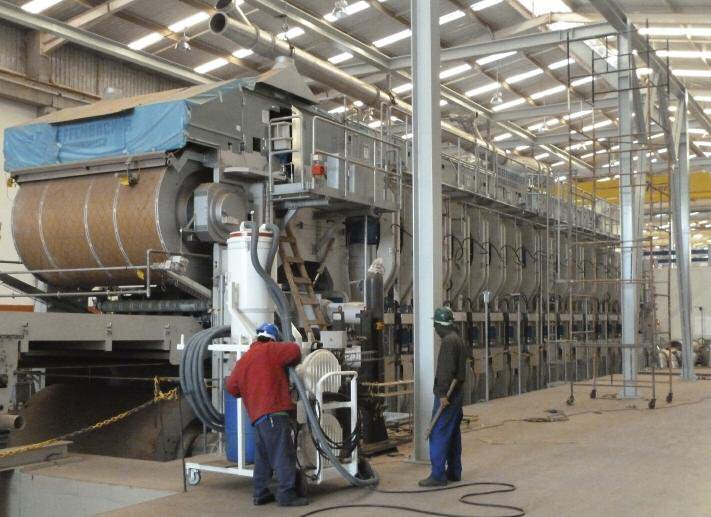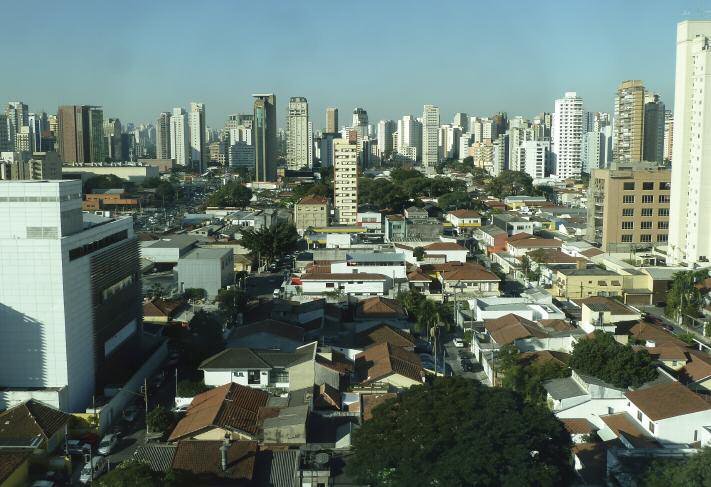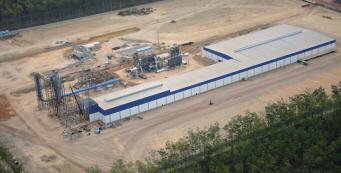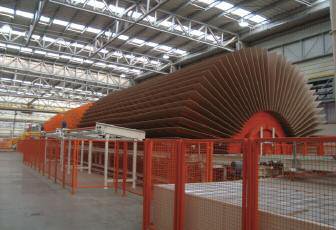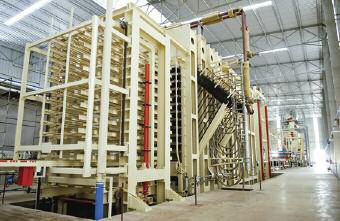Everything to play for in a growing market
16 November 2010With two new fibreboard plants ?– a 350,000m3/year thin MDF/HDF line and a 120,000m3/year standard MDF line – being brought on stream respectively by Eucatex and the newest plywood convert to fibreboard, Floraplac, by this year’s end, annual overall panel capacity in Brazil has swollen to almost 10 million m3.
In spite of the ill effects of the global recession in 2009, and the danger of a supply glut, Brazilian producers have seldom looked happier. They are heartened by the speed of recovery displayed by the national economy – and by renewed growth in the domestic panel market.
“The first half of 2009 was not very good, but in the second half, really from September last year, the [Brazilian] market started to pick up and to grow very strongly,commented Rosane Donati, executive director of ABIPA, the national wood panel industry association.
While ABIPA did report a slight waver in the market trajectory this April and May, there was a clear indication that panel producers are focusing on turning out more added-value laminated panel products. In addition, demand for thin MDF has been strong.
There is little doubt that it was, in part, thanks to a Brazilian government programme to stimulate various sectors of the national economy that the market revived so quickly. Fiscal support for the furniture industry came in the form of a temporary waiving of the industrial products tax (IPI), dropped from 10% to zero from November 2009 to this March, and reimposed on the sector, at just 5%, from April.
“This was a big help. It was the biggest fiscal aid for our sector in 50 years and it came as a result of pressure applied by ABIPA and our industry to boost competitiveness and investments in furniture,declared the association’s newly installed president, Alexandre Coelho, who is also commercial executive director of Duratex’s wood business.
Sustained Brazilian economic growth reflects a steady increase in the number of new consumers entering the formal economy. More than 40 million of Brazil’s people have become consumers of goods, including furniture and household fixtures, over the past two to three years, according to Mr Coelho.
Mr Coelho is confident a speedy recovery in the market is just the start of a new burst of national growth. “The growth cycle in Brazil will, in our view, be very good for the next five years,he told WBPI when interviewed in July this year.
However, the global economic crisis has taken its toll on Brazil’s export markets. Panel makers, like their counterparts in other sectors, face over-capacity in Europe and the Middle East and adverse currency exchange conditions. Fortunately, there is still the resilient domestic market, with promised growth of at least 4.5% annually over the next three years.
So strong is the pull of domestic customers that ABIPA has been hard put to find sufficient supplies of MDF and other panels to meet demand from would-be foreign buyers according to its executive director, who has travelled to various parts of the world promoting the panel industry.
“We went to the Middle East and [literally] had no surplus [Brazilian] panels to sell there. Everything is committed to the domestic market,the executive director told WBPI in Sao Paulo this June.
This year the country’s panel manufacturers have been working flat out to meet national demand, with plants operating on average at between 85-90% of capacity, ABIPA reported. If demand takes off again, as is normal in the second half of the year, then fresh capacity being brought on-stream as new lines ramp up will ease the tightening market situation.
One new MDF plant likely to swell supply is the new Duratex MDF line II at Agudos, with its world-record, 77m-long Siempelkamp press, which was still at 85% of full capacity a year after its start-up in June 2009.
Another local leader, Arauco do Brasil, has been ironing out bottlenecks on its two newly acquired MDF lines at the former Tafisa Brasil site in Piên in Paraná state in a bid to maximise output.
In the case of MDP (medium density particleboard), several lines were ramping up this year – all in Brazil’s southernmost state of Rio Grande do Sul.
Fibraplac Chapas de MDF Ltda was scheduled to reach the 500,000m3/year capacity of its Siempelkamp MDP line, launched in July 2009 at Glorinha, and Masisa do Brasil Ltda was set to run its new 750,000m3/year Dieffenbacher press line in Montenegro at over 500,000m3/year in 2010.
Meanwhile, at mid-year, the 700,000m3/year former Satipel line in Taquari, now part of the Duratex ‘super group’, was operating at 70% of its full capacity, it said.
Elsewhere, start-up of the new 350,000m3/year Dieffenbacher MDF/HDF line of Eucatex SA in Salto, Sao Paulo state, which was due on stream by September, fell behind schedule and at press time was set to launch in mid-October 2010.
A further capacity expansion plan remains on track for a 2012 start-up. That is Curitiba-based Berneck group’s bold new plan to build a wood products complex at Curitibanos, Santa Catarina state. This will initially include Berneck’s second MDF plant, a 450,000m3/year Siempelkamp line for standard thicker board; and a sawmill.
One extraordinary addition to the panel scene in Brazil is the arrival of the much-heralded mixed eucalypt/paricá MDF plant of plywood producer Floraplac Industrial MDF Ltda. Located in Paragominas in Brazil’s tropical Pará state Floraplac, equipped with a Chinese-built 120,000m3/year batch-press line supplied by Dieffenbacher subsidiary SWPM, was due to start up in August.
Floraplac, which has more than 30,000ha of plantation paricá, a low-density, fast-growing local native hardwood, will start by using only eucalyptus, gradually adding greater amounts of parica fibre after around two months of operation, according to panel sector consultant Henrique Zanin of the Organon consultancy.
The use of paricá fibre, which could eventually contribute up to 30% of the furnish, is still somewhat experimental, admits Mr Zanin who is working on the project with Floraplac’s management.
“We need to see the cost of using more paricá first because we’ll need to add more resin,he explained. The aim is to mix low density paricá with higher density eucalyptus, carefully blending the two to create a fibre with something of the characteristics of softwood pine.”
The key to blending and extracting the different fibres for Floraplac’s board making is the plant’s Andritz defibrator, which will have excess capacity in order to give adequate attention to preparing the mix.
Floraplac, whose Chinese line is similar to those of two other MDF converts from plywood in southern Brazil: Indústria de Compensados Sudati Ltda and Industria de Compensados Guararapes Ltda, is targeting its product at Brazil’s promising northern regional market.
With MDF demand booming in Brazil’s developed southern states, the country’s poorer and distant north and northeast have been starved of the board in 2010. Would-be buyers have had to make do with plywood for a multitude of purposes in the absence of MDF.
However, it is clear Floraplac’s single plant will only be able to supply part of what is a huge part of Brazil – it will stick largely to the northern region. Panel industry players are already showing close interest in the prospect of big potential sales to the ‘upwardly mobile’ population of the poorer northeast region. But today, shipping board from their southern plants would prove too costly.
So, several big producers are already considering locating a large wood products complex in the panel-starved north of the country. Industry sources suggest that these include the new Duratex ‘super group’ and perhaps the Arauco group.
As for Brazil’s southern plywood converts, Sudati of Paraná and Guararapes in Santa Catarina state, the rapid market recovery and surging demand has enabled them to find their MDF feet. Each firm has upgraded its line and has wound up its capacity this year to around 220,000m3/year, reports ABIPA.
Meanwhile, other plywood makers whose business was badly hit by the economic recession are reviewing shelved schemes to start their own MDF lines.
In addition, one Paraná company, Repinho Reflorestadora de Madeiras e Compensados Ltda of Guarapuava, has opted for MDP.
It is running a used melamine laminating line and installing a particleboard line, bought secondhand through German machinery supplier Modul Systeme, who sourced it from the former MDF plant of Malaysian producer Merbok of Kedah.
This year, there is a new mood of optimism in Brazil’s recently-consolidated panel industry. With the domestic market looking stronger than ever, it seems only a matter of time before producers turn to fresh plans to expand capacity again in South America’s most dynamic marketplace.
